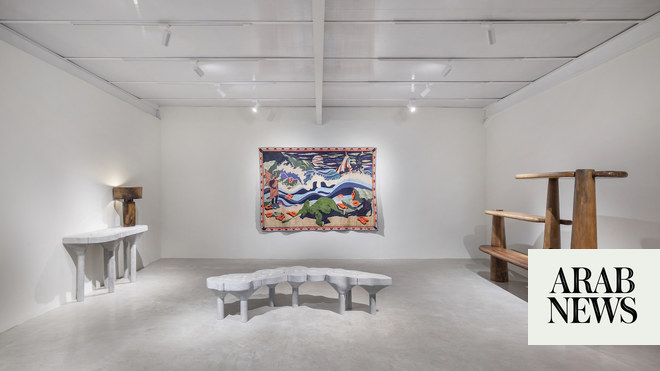DUBAI: Inside the remains of Carthage, a great city founded by the Phoenicians in the 9th century BC. — near the Tunisian capital, Tunis — are some delicately placed contemporary design objects. Their newly made finish is in stark contrast, yet complementary, to the ancient ruins.
Vibrantly colored wool kilims created by Medellin-based American designer Chris Wolston and Tunisian artisans Le Kef are graciously placed over the remains of ancient Roman columns.
In addition, there are the curved lines of the new and beautiful furniture pieces made of palm wood by Studio Manda, a firm of Lebanese designer Georges Mohasseb, produced by Tunisian artisan Kais Gharbya. They can be found nearby, stationed and amidst ancient ruins and sculptures.

These works are part of the inaugural exhibition “Carthagisme”, curated by Milan-based curator Nicolas Bellvance-Lecompte for Galeria Lamia Bousnina.
This is a space that opened at the end of May in the center of Tunis and is dedicated to the exhibition of art and design, with an emphasis on promoting the craftsmanship of the country.
“In a country where tradition intertwines with constant Mediterranean cultural influences, the exhibition celebrates Tunisia's artistic heritage while embracing the dynamism of contemporary creative expression,” Bellvance-Lecompte said in her curatorial statement.
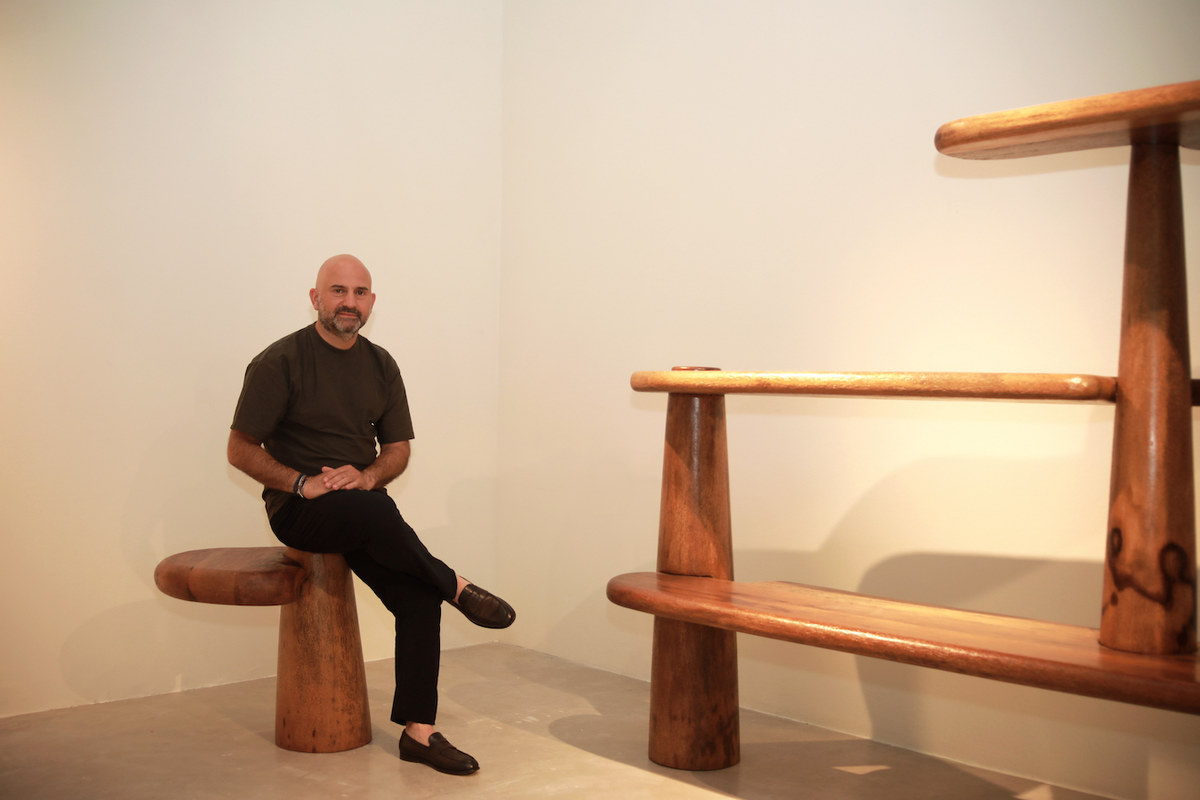
“We want to celebrate our Tunisian heritage,” Lamia Bousnina Ben Ayed, founder of the namesake space, told Arab News. “Design is now becoming more and more important in Tunisia. We want to promote design objects made in Tunisia. I have always wanted to create bridges and connections with designers from all over the world.”
The exhibition, which runs until September 29, features specially commissioned pieces by six international designers.
They include Elias and Yousef Anastas from Palestine, French multidisciplinary designer Louis Barthelemy, Beirut-based Mary-Lynn Massoud and Georges Mohasseb, also from Beirut, and American Wolston, currently based in Medellin, Colombia.

The works have been temporarily placed amid the ruins of Carthage for a preview of the exhibition and will later be moved to the gallery – a sleek, white-walled, high-ceilinged new venue in the center of the city.
To create each project, the designers were paired with local Tunisian artisans.
Tunisia has long been home to a vibrant artisan community. According to data from the Oxford Business Group, the country has around 350,000 artisans, mostly women, who work mostly in marginalized communities where they contribute to the local economy.

These new pieces, which have served to support Tunisian craftsmanship, form a dialogue with local industry to create stunning new works of contemporary design and aim to start a micro-economy in Tunisia.
“The group exhibition is a manifesto celebrating Tunisian culture, revitalizing and reinterpreting traditional craft practices through a series of unique collaborative commissions,” said Bellvance-Lecompte.
Mohasseb teamed up with Gharbya to produce furniture from palm wood – a notoriously difficult material to work with due to its irregular fibers and rough texture.
“The whole process was very interesting,” said Mohasseb, who regularly works with wood but had not done so with palm before.

Gharbya, Mohasseb said, is located eight hours away from Tunis, in the southwestern region of Tunisia, where the largest palm trees grow. “It was a challenge for all of us, but we were up for it.”
He added: “Although the pieces are very simple in form, they are difficult to make in terms of connection and assembly. (The craftsmen) wanted to learn and explore and were open to doing something different from what they had been doing for centuries.”
The resulting pieces — a bookshelf, a long bench, a table and chairs — came together, Mohasseb said, in an “authentic and humble way.”
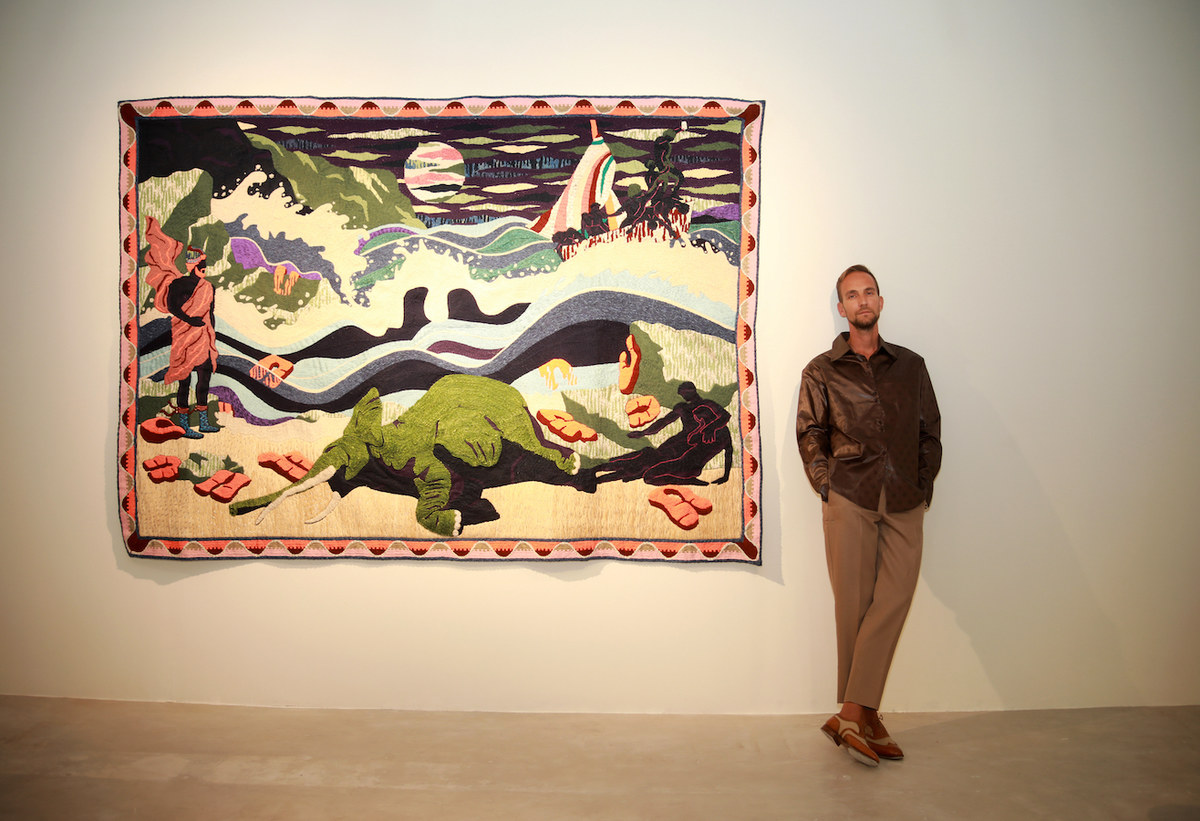
Palestinian brothers Elias and Yousef created a series of stone tables whose irregular anamorphic forms were created based on computer modeling.
The pieces, which feature irregularly shaped pieces joined together without glue or cement, are an extension of their “Stone Matters” project, which explores the predominance of stone in Palestinian architecture. The resulting tables, on view in the gallery, were made with local Tunisian artisan MDO.
Beirut-based Lebanese designer Massoud worked with local Tunisian ceramist Ali Kadher to create ceramic pieces titled “Primordial Echoes” that honor and support the traditions of Tunisia's Gafsa region.
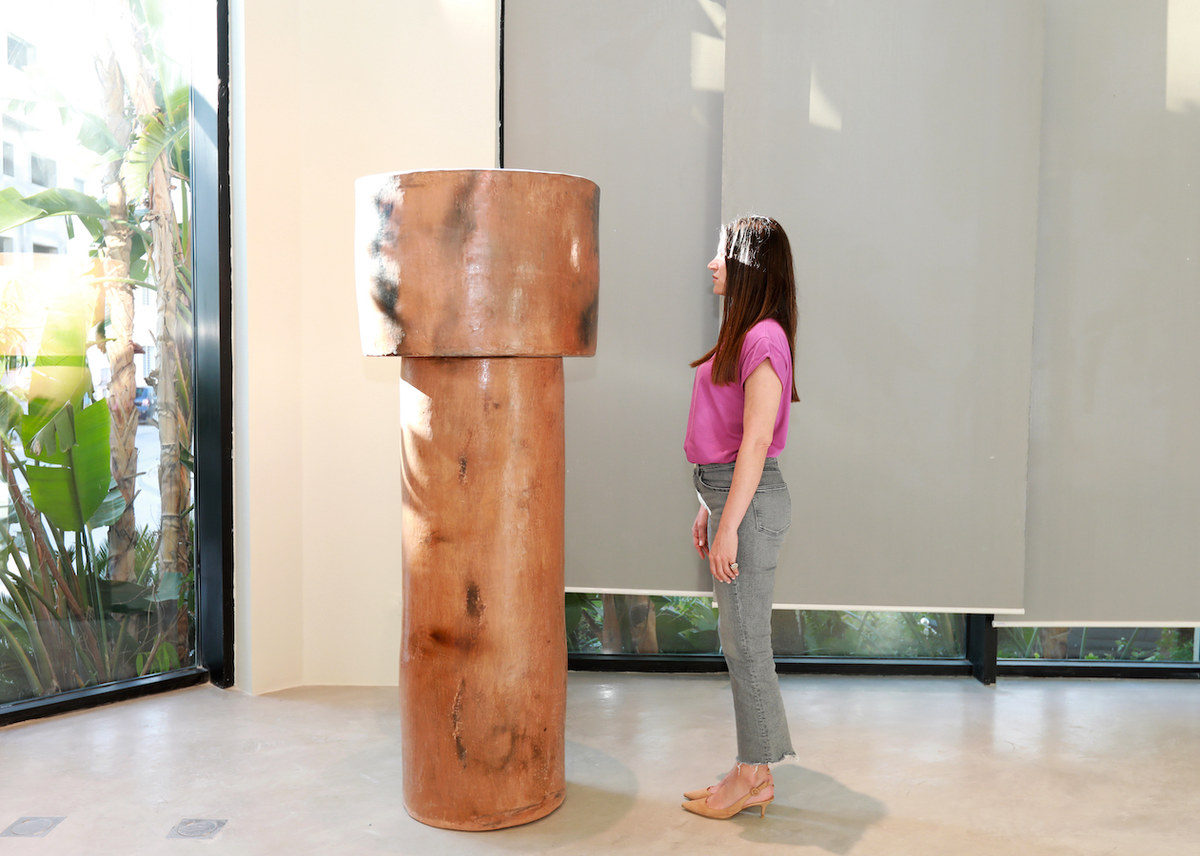
The goal was to create ceramic floor and table lamps, as well as side tables, that reflect the color and texture of Mohasseb's palm wood pieces. Of note is how her work incorporates references to Tunisian tribal pottery.
Wolston, on the other hand, created 10 eye-catching, colorful kilims with a variety of geometric patterns. To produce each one, Wolston worked with 10 weavers from the Le Kef region of northwestern Tunisia, who based their designs on designs he created.

Also created in various textiles is “Hannon and the Mediterranean Mirage,” a tapestry by French designer Louis Barthelemy made with Tunisian Nejib Bel Haj that powerfully unites ancient Tunisian history with current Mediterranean stories.
The vibrantly hued tapestry features a mix of figural and abstract depictions, including the 6th century BC portrait of the Carthaginian explorer Hannon.
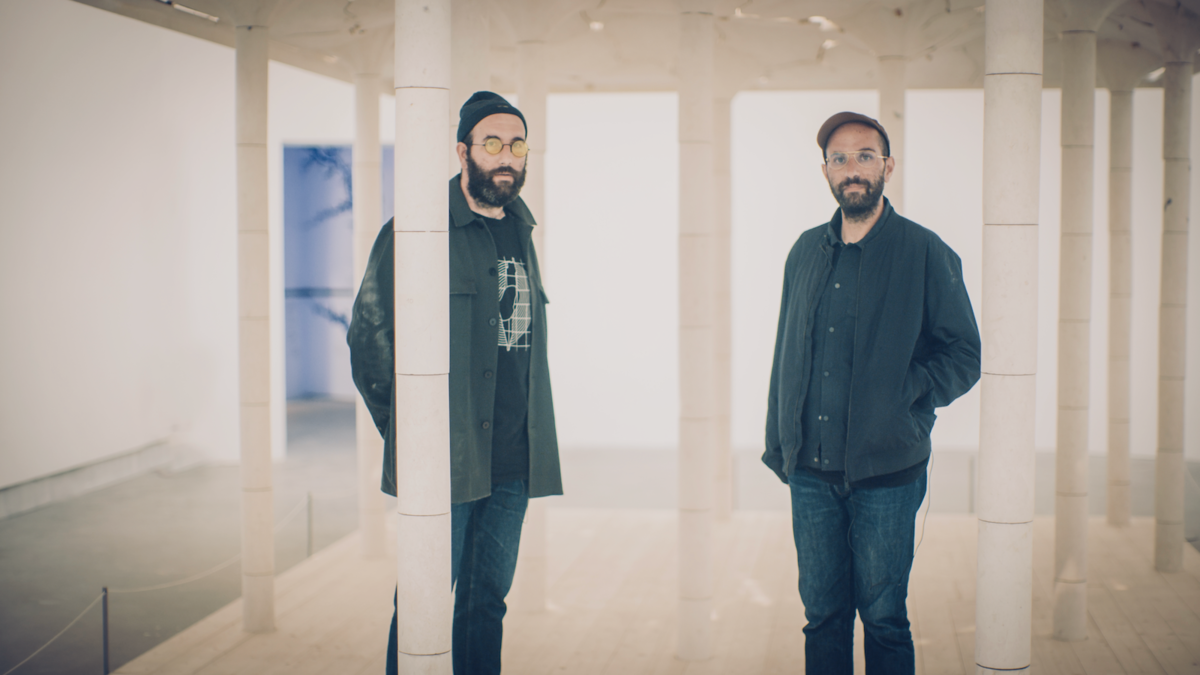
It references his travels around the Mediterranean, as well as the bright orange life jackets that reflect the hardships of North African migrants crossing the Mediterranean in the hope of a new life.
The tapestry, like the works specially created around the theme of 'Carthagisme', poignantly unites tradition, ancient history and the present in the context of Tunisian heritage.
